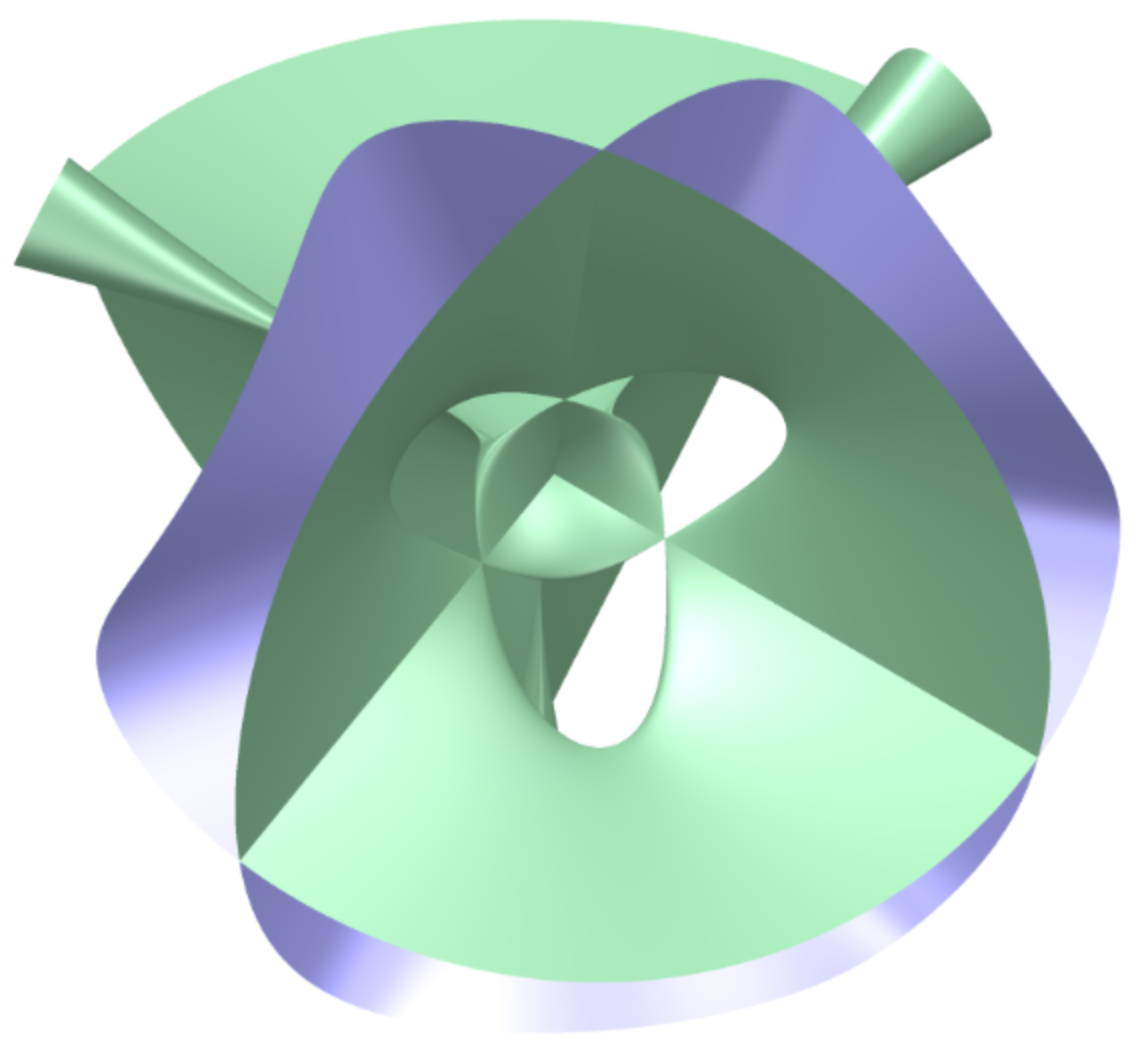Geometry of Enriques Surfaces
Roma Tre University, Fall 2024
Instructor: Luca Schaffler

General information for the course
-
First meeting. The first meeting will be on October 3.
-
Contact. Email: luca dot schaffler at uniroma3 dot it
-
Level. PhD course.
-
Credits. 3.
-
Description.
Historically, Enriques surfaces were the first examples of non-rational algebraic surfaces with geometric genus and irregularity equal to zero. Enriques surfaces form a 10 dimensional family, and they constitute a fundamental slice of the Enriques–Kodaira classification of algebraic surfaces. The objective of this course is to study the geometry of these objects, gradually leading to modern active research. In particular, we will focus on the study of elliptic fibrations and the non-degeneracy invariant, which is related to the realization of Enriques surfaces in projective space. Finally, we will consider Enriques surfaces from the point of view of moduli and compactifications, especially from the point of view of stable pairs and the minimal model program.
We will focus on the fundamental tools of this theory, concrete examples, and computations.
-
Meetings. One or two meetings per week on Monday and Thursday according to the schedule below. The class time is always from 16:00 to 18:00. We will meet in Aula C in the Physics building.
-
Streaming. The course will be streamed. If you are interested in attending online, please email me at the above email address.
-
Type of examination. Attendance, participation, one written Homework, and a seminar (or a written report) on a related topic.
-
Prerequisites. An introduction to algebraic geometry, including schemes and sheaves.
Bibliographical references
-
François Cossec, Igor Dolgachev, Christian Liedtke. Enriques surfaces, I. Link.
-
Igor Dolgachev, Shigeyuki Kondō. Enriques surfaces, II. Link.
Topics by meeting
-
Meeting 1. (03/10/2024) Introduction to the course and historical remarks. Algebraic surface, irregularity, geometric genus, second plurigenus, Castelnuovo's rationality criterion, Enriques sextics and study of their singular locus, the normalization of an Enriques sextic is smooth. Lecture notes.
-
Meeting 2. (10/10/2024) The configuration of six elliptic curves on the normalization of an Enriques sextic preimage of the coordinate tetrahedron, proof that the normalization of an Enriques sextic has geometric genus zero and that it is not rational. Lecture notes.
-
Meeting 3. (17/10/2024) Proof that the normalization of an Enriques sextic has irregularity zero, definition of Enriques surface. Digression on K3 surfaces: definition of K3 surface, the example of smooth quartic surfaces, first geometric properties of K3 surfaces: they are minimal, Kodaira dimension zero, \(b_1=0\), \(b_2=22\), \(h^{1,1}=20\), and proof that they are simply connected. Lecture notes.
-
Meeting 4. (24/10/2024) Rational, algebraic, and numerical equivalence for curves on a K3 surface coincide, for a K3 surface \(X\) there is an isometry \(H^2(X,\mathbb{Z})\cong U^{\oplus3}\oplus E_8^{\oplus2}\) (statement only). Digression on lattice theory: definition of lattice, sublattice, lattice isometry, examples (\(I_{p,q}\), \(U\), and the ADE lattices). The Gram matrix of a lattice, rank, discriminant, signature. Nondegenerate, unimodular, indefinite, even, and odd lattices. The twist \(L(m)\) of a lattice \(L\) and direct sum of lattices. Milnor's theorem on unimodular lattices. The discriminant group of a lattice. Lecture notes.
-
Meeting 5. (07/11/2024) Cardinality of the discriminant group of a lattice, example of discriminant group. Proof that for a K3 surface \(X\) there is an isometry \(H^2(X,\mathbb{Z})\cong U^{\oplus3}\oplus E_8^{\oplus2}\). General properties of Enriques surfaces: they are minimal, Kodaira dimension zero, \(K_Y\nsim0\), \(b_1=0\), \(b_2=10\), \(h^{1,1}=10\). Covers induced by torsion line bundles. Lecture notes.
-
Meeting 6. (14/11/2024) For an Enriques surface \(Y\), the étale double cover \(X\rightarrow Y\) induced by the \(2\)-torsion canonical bundle \(\omega_Y\) is a K3 surface, \(X\) is the universal cover of \(Y\), and \(\pi_1(Y)\cong\mathbb{Z}/2\mathbb{Z}\). Conversely, the quotient of a K3 surface by a fixed point free involution is an Enriques surface. For an Enriques surface \(Y\), we have that \(\mathrm{Pic}(Y)\cong\mathrm{NS}(Y)\cong H^2(Y,\mathbb{Z})\), \(\mathrm{Num}(Y)\ncong\mathrm{Pic}(Y)\), the torsion part \(T\) of \(H^2(Y,\mathbb{Z})\) is isomorphic to \(\mathbb{Z}/2\mathbb{Z}\), and the quotient \(H^2(Y,\mathbb{Z})/T\) is a lattice isometric to \(U\oplus E_8\). Definition of elliptic fibration, construction of elliptic fibrations on Enriques' original example. Lecture notes.
-
Meeting 7. (21/11/2024) Construction of elliptic fibrations on Enriques' original example (continued). An elliptic fibration on an Enriques surface has exactly two multiple fibers, and these have multiplicity \(2\), definition of half-fiber, elliptic fibrations on Enriques surfaces cannot have a section. The non-degeneracy invariant of Enriques surfaces: first properties and an example. Fano polarizations and Fano models of Enriques surfaces. Lecture notes.
-
Meeting 8. (25/11/2024)
-
Meeting 9. (28/11/2024)

